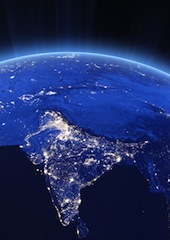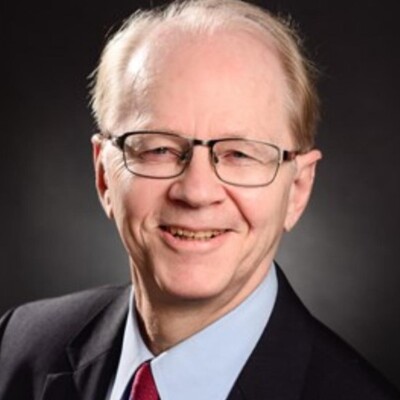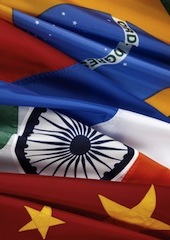The Growing Regional Divide in India
Regionalism may triumph in India as it did in Germany, changing the face of Indian democracy.
May 15, 2014

I am back in the country I grew up in during the 1960s and 1970s. As India wrapped up a highly charged national election, I could not help but see India through the lens of my own professional formation. My views and perspectives are tinted by my many years of involvement in government in Germany, both at the state and federal level.
Strange as that may initially sound, having that as a professional background is actually a very helpful guide to begin to comprehend something as complex as India’s democracy.
For me, it is no surprise that the largest and most diverse democracy in the world is a federation with strong regional state powers. Constituting India as a federation following independence, along language lines, was the decisive break from the completely centralized political set-up of its erstwhile colonial master.
In the last decades, the trend towards more regionalization picked up steam. It is fundamentally transforming Indian democracy — and creating a colorful political map rooted in its 28 states. (The new state of Telangana will be created on June 2, 2014, bringing the total to 29 states).
I found this tension between the federal and regional dimension to be one of the major factors in this election. On the one hand, Narendra Modi chose to run on his record as Chief Minister of the State of Gujarat.
While Indians contend that Gujaratis have the natural entrepreneurial gene anyway, Modi clearly created a business-friendly environment for such a mind-set to prevail during his years in office.
Modi — Much more than hype
Given the slump in India’s overall economic performance during the past decade or so, his message of economic development has resonated not just with the business community, but also the growing and ever more assertive urban middle classes.
This was mirrored in Modi’s media-oriented campaign, largely financed by big business. It created the impression of a nationwide “Modi wave“ — obliterating the fact that India is still largely rural.
Yet, even in villages across the country there is a sense that India needs a new development surge and that one might emulate what has been touted as the Gujarati Model of economic development.
In any case, this was the first time that a former Chief Minister ran for Prime Minister on the basis of his record in running a state. Even when the discussion focuses on the dark side of his role in pogroms by Hindus against Muslims during that tenure, it was his record in Gujarat that polarized voters.
The prospective prime minister put forth by the Congress Party, Rahul Gandhi, relied on the charisma of the family name. But he had no executive experience and thus no own operational model to point to and that worked against him and his party.
The upshot was that other state Chief Ministers, such as Tamil Nadu’s “Strongwoman,” Jayalalitha Jayaram, challenged the success of the “Gujarati Model” compared to their own. She and others thereby created a useful debate about regional benchmarks and about the proper mix of economic and social indicators to measure performance.
There are, in fact, a number of “models” out there besides Gujarat and Tamil Nadu: Think of the Kerala Model or the Bengali Model.
Strong regionalism remains after the election
The historic governing majority won by Narendra Modi has created the impression that a national “modi wave” has carried all before it and obliterated the regional differences and political parties.
A closer look at the election outcome reveals a different picture. In the first place, India’s winner-take-all, constituency-based electoral system vastly exaggerated the distance between Modi’s triumphant BJP party and the Congress party as well as the regional parties.
In truth, the BJP garnered little more than 30% of the popular vote while the Congress party got around 20%. A full 50%, or one half the Indian electorate, preferred one of the regional parties. If India had a European style system of proportional representation, Mr. Modi would have a lot of coalition building to do.
Even more interesting is the clear North South-divide apparent in the results. Let’s take a look at India’s southern States. In Tamil Nadu, J.Jayalalita’s AIADMK romped home, winning all but two of the 39 constituencies on the basis of her Tamilean development model.
In Andhra Pradesh, the two regional Parties took about 2/3 of the seats, while in Odisha the party of sitting Chief Minster Naveen Pattanaik won everything but one lone seat.
In Kerala, 14 of the 20 twenty constituencies went to the traditional Congress and Communist parties, who have alternately run the state for the past decades. And in Karnataka, the other remaining southern state, the Congress party ran an extremely close second to Modi’s BJP.
In fact, the Congress party has become almost a wholly South Indian party with a majority of its seats won below the Bombay line. In Bengal, too, Mamata Banerjee’s “Trinamool (grass roots) Congress” took 34 of 42 seats.
Given these results, it would be dangerous for Modi to fall prey to any “national mandate” hype. Disregarding the unbroken Indian trend towards regional self-affirmation, particularly in the South, runs the risk of turning regionalism from a constructive into a centrifugal force.
India is not only the North Indian, Hindu and Hindi belt, which voted solidly for Modi. Pursuing truly national policies and actually implementing them means working together with the states and regional interests by means of a cooperative federalism.
Germany: A much smaller, equally complex democracy
Much of this reminds me of my home country, Germany. The current Chancellor Angela Merkel aside, the usual way to the political top job in the country has been to be successful at the state or municipal level. Konrad Adenauer, the first post-WWII Chancellor, had been a longtime mayor of Cologne, Willy Brandt in Berlin, Helmut Schmidt in Hamburg, Helmut Kohl in Rhineland-Palatinate and Gerhard Schröder in Lower Saxony.
Regionalism will hold sway in India, too, from now on. In a process that started with the Tamilean parties DMK and AIDMK in the 1960s, there has been a steady growth of strong regional parties throughout India that are based in only one state: the Trinamool Congress (Grassroots Congress) in West Bengal and the Shiv Sena in Maharastra or the Bahujan Samaj (Party of Social Majority) in Uttar Pradesh.
Even the new anti-corruption Aam Aadmi Party is basically Delhi-based. All of this has come at the expense of nationally based parties such as the Congress party.
Regionalism and mega-complexity
There will still be grand bargaining by regional leaders as they try to get maximum traction for their state in exchange for supporting, or joining, the new national government coalition.
Already, Tamil Nadu’s Jayalalitha (AIDMK) wants financing of infrastructure and mediation in water disputes with neighboring states Kerala and Karnataka. Note that the same coalition game will be played for an alternative “third front” majority, one comprising the Congress, the Aam Admi and regional parties.
All of this makes evident the extent to which Indian politics has experienced a profound shift to a regional, state-rooted political model. In fact, to understand Indian politics means fathoming the currents and eddies of its regional forces — a grand exercise in mega-complexity at any moment.
And the process will continue, including the formation of new states. On June 2, 2014, the large state of Andhra Pradesh will split into Telengana and Seemandhra. For the next 10 years, they will share their former common capital Hyderabad.
An India with two capitals?
Then, Seemandra will build a new state capital from scratch. There is even talk that, as part of this process, some ministries and agencies could relocate from Delhi. That would eventually give India a Northern and a Southern capital city.
That is much as in (much smaller) Germany, where government ministries are generally now located in Berlin in the country’s east, while some have remained in Bonn, the previous (Western) capital.
This may be far fetched. But given the trend towards regionalism, It will be interesting to see at what point there will be a constitutional debate in India about realigning state-center relations. Such debates are not uncommon in federal states and can lead to major reforms.
Germany as a practical example
Germany went through such a process less than 10 years ago, following the recommendations by two successive “Federalism Commissions.” As a result, the jurisdictions and responsibilities of both state and central governments have been more clearly delineated.
And, in any democracy, this is an ongoing process. Currently, Germany is set to readjust revenue sharing patterns — both horizontally (between richer and poorer states) and vertically (between the center and the states).
Making any adjustments in that already very complex formula is very hard to do. In effect, it resembles the proverbial Rubik’s Cube puzzle, where states’ rights must be respected (even more), while some efficiency gains that ultimately benefit (almost) everybody in the country in question must urgently be realized.
In Germany, many of these vexing debates play out in the Federal Council, the Bundesrat, which is Germany’s second chamber of parliament. Here, representatives of the state governments review all national legislation, make recommendations and can stop any legislation affecting state finances and administrative resources.
It would not be surprising if a debate were to start in India very soon that also looked at the role of its second chamber, the Raja Sabha. Or at the role and functioning of municipal government throughout the nation.
Maybe someone in the future will run for Prime Minister on the basis of having created a model city with functioning services and a responsive administration. Now, that would be globally inspiring.
Editor’s note: Raimund Grafe grew up in India, where he lived from 1961 to 1975, and returned to Germany after graduating from his Indian high school. This feature was updated on May 19 following the May 16 elections in India.
Takeaways
Regionalism may triumph in India as it did in Germany, changing the face of Indian democracy.
In the recent election, 50%, or one half the Indian electorate, preferred one of the regional parties.
Given the election results, it would be dangerous for Modi to fall prey to any "national mandate" hype.
Modi's party garnered little more than 30% of the popular vote while the Congress party got around 20%.
Regionalism in India will ultimately transform the democracy, creating a colorful political map of 29 states.
India needs a debate about regional benchmarks and the proper mix of economic and social indicators.

